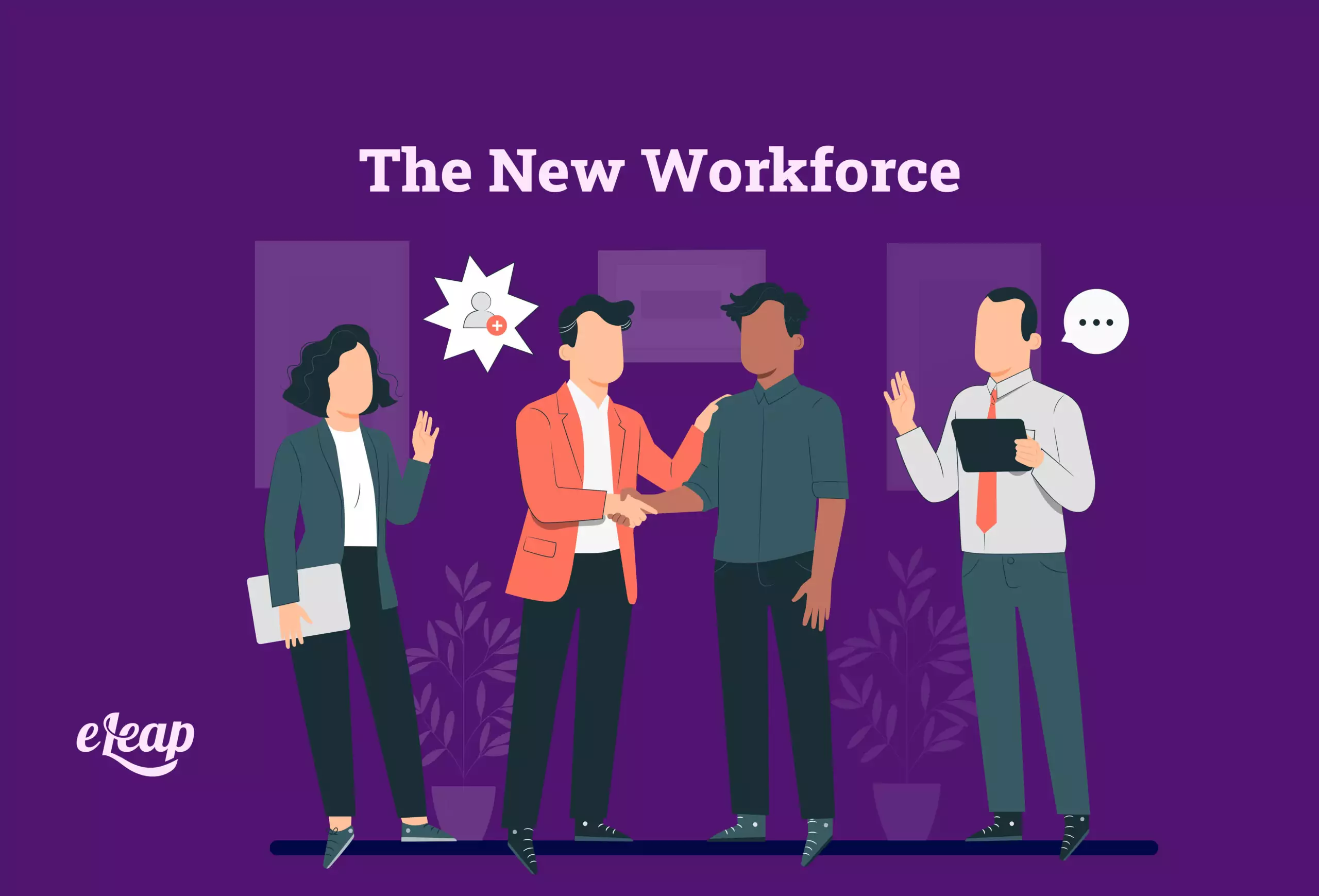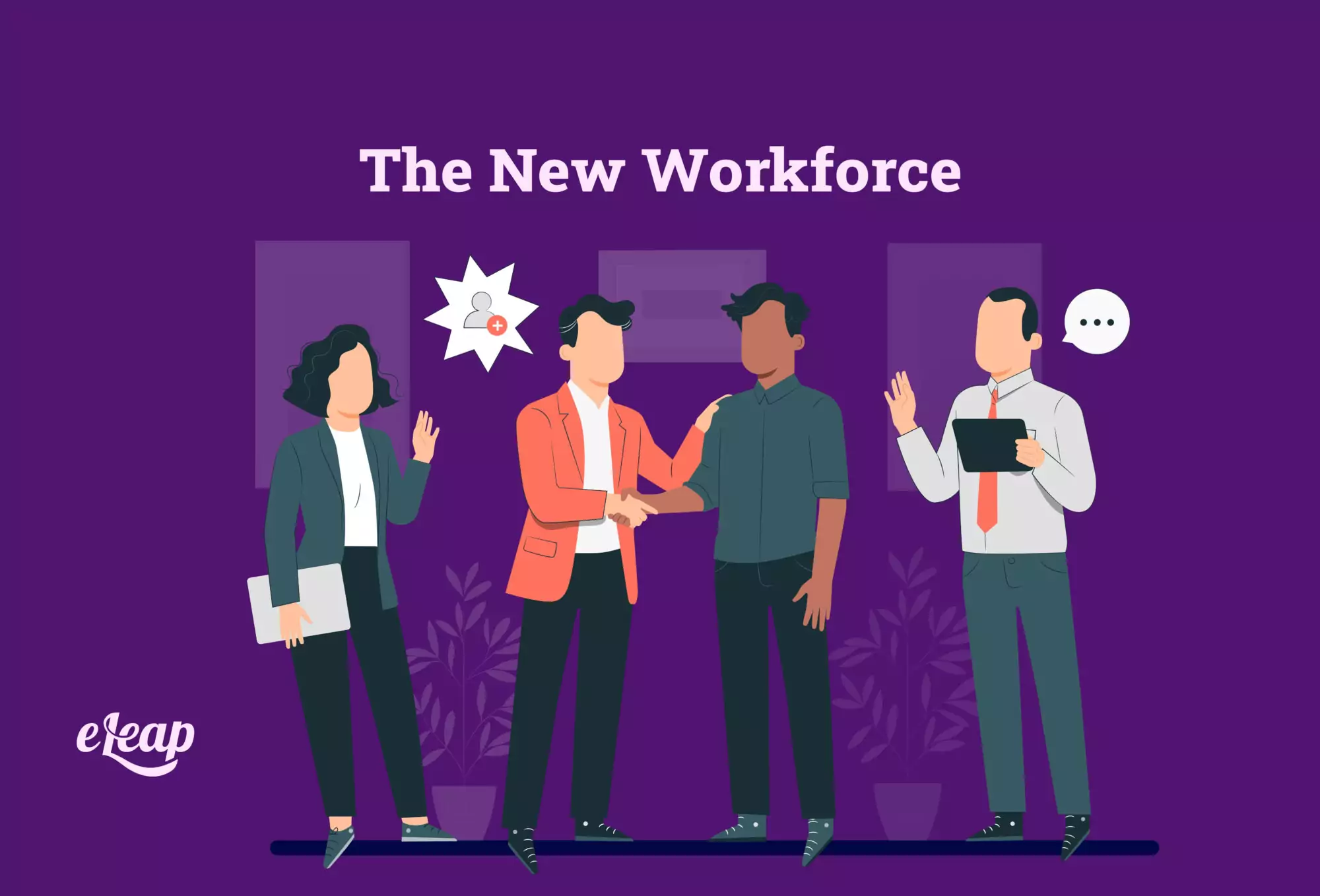The New Workforce

Currently, a large majority of the American workforce is considered part of the “alternative workforce.” This term is used to describe a portion of working Americans that, over the last decade, have adopted a unique set of habits, ethics, and ways of learning different from the laborer of the 20th century.
These workers have established characteristics such as regularly engaging in a side-hustle, becoming small business owners in conjunction with working a full-time job, and becoming a jack of all trades when it comes to technological and marketing positions. Because of this, the way organizations hire, recruit talent, implement training programs, and engage with team members has completely changed.

The Evolved Employee
Overall, the modern worker has become more versatile, and in a sense, brings more value to the table in terms of their flexibility in a number of areas. Currently, the average member of the corporate workforce is able to mold into several positions, handle comprehensive projects, manage their own time, and work remotely or in a collaborative environment.
What used to be a concrete, by the book, extremely compartmentalized picture of an organization has now turned into an inter-departmental, constantly evolving, self-defined, living, and breathing organism. How did we manage to get here?
How Did We Arrive at Our Current Workforce?
It’s not like these changes happened overnight. Management didn’t close the office one evening, only to open it to an entirely new entity the next.
Changes like this happen in stages, slowly but surely, over time. Let’s examine the steps involved with the transition to the current picture of our corporate environment.
Traditional Employment
From the earliest stages of the corporate world, most businesses were incredibly stable all the way into the 1980s. An organization hired most American men and women who worked their way through the ranks until they hit their peak and began the cruise toward eventual retirement.
In those days, when a company hired you, you stayed with the company. You knew what to expect, and from your hiring date, the rest of your time there was lived out by a corporate playbook in a slow but steady pace toward the well-known retirement package and gold watch.
The most solid beginning of this trend was most likely birthed in the 1940s and 50s, as two-thirds of Americans worked lifetime careers. This corporate environment gave birth to a vibrant, thriving middle class that is now in danger of becoming extinct.
The road for almost every corporate employee was identical: They were hired and stayed for life, experienced some development, a few opportunities, and a small raise every year. This segued into the transparent job market.
Transparent Job Market
The closing of the 1990s and the dawn of the 21st century was the beginning of the end for traditional employment. Two major events could be considered the driving forces that perpetuated this disintegration – the explosion of the internet and the recession of the year 2000 (also known as the “dot-bomb”).
However, what grew out of these events would end up being an explosive change in the job market. The internet gave employers a chance to post their available jobs online. Anyone who wanted to change careers was suddenly given the power to expand their horizons.
Remember, prior to this, the only way to conduct a job hunt was by reading the ads in the newspaper, calling a company, and sending your resume through traditional mail or fax. This was a real chore, and in some cases, could take months to see out.
If you didn’t know someone within the company, it was nearly impossible to get noticed. Recruiters did exist back then, which provided some relief, but job hunting wasn’t easy.
This trend started changing beginning with Monster.com, CareerBuilder, Craigslist, and other companies. Webmasters created job boards where companies could post their jobs and workers could apply on the internet.
While there was no guarantee you’d get a callback, the power of employment shifted from the employer to the employee. This began forcing employers to think about their brand, Glassdoor ratings, and how they marketed themselves to the potential workforce.
The employee engagement industry, which was an obscure psychology sector in the 70s and 80s, exploded because of these changes. When employees can look around for jobs by clicking a mouse, you might want to make sure your company is worth working for.
This process evolved for almost 20 years until the next recession.
Freelancer Explosion
The recession of 2008 left A LOT of people with no job or source of income. The number of home foreclosures and individuals approaching poverty was a sad time in history to live through for those who recall.
What did people do?
They went out and found part-time work. Just like when companies Monster and CareerBuilder disrupted the newspaper ads, companies like Upwork, GitHub, and Kaggle changed the process of finding full-time employment.
Because people were able to work part-time and collaborate online, the opportunities were endless. People had access to multiple job networks, freelance sites, and dozens of vertical job boards where people could bid for work, post work, and look for projects to get them paid.
Today, there are hundreds of specialty work websites like TaskRabbit, UpWork, PeoplePerHour, and so many more. You also have websites like Uber, Lyft, DoorDash, and similar models that changed other industries.
You can find data analysts, software engineers, financial gurus, salespeople, and anything else you would ever need. Finding a specialized provider for any type of work has never been easier.
Where We Are Now
We currently have what’s considered a pixelated workforce. Each individual in every different type of work is like their own mini workforce, each with its own way of doing business.
When you want a designer for your website, you can hire a full-time employee, choose a design firm, pick a part-time designer, or bid out to a team of designers you find on the internet. The actual person may be in your office or on the other side of the country or world.
Pixilation is also happening in every single portion of companies. There are pixelated sales teams as companies hire third-party organizations to handle sales or customer service, pixelated marketing, and even pixelated pharmaceutical companies that outsource drug testing.
No longer do people have to put on their mud boots and wade their way through the corporate jungle to obtain a piece of the forever dangling carrot. Instead, people can cut out the white noise and instead do only the work they love – and make a good living doing it.
Find Ways to Utilize All This Talent
It’s clear that the hiring process has shifted, but many employers still haven’t caught up. The overall talent of the American worker has increased, but talent acquisition is difficult because more people are working on their own time, and to put it frankly, they don’t have to deal with the corporate riff-raff.
Attention to employees’ goals, wellbeing, and overall experience is important, and this is where an LMS steps in. With the right LMS, it will provide all of these elements and ensure employees receive something of value besides their wages – a work experience that provides resources, a chance to learn and level up, and an overall experience that promotes growth in every aspect of their lives. This is what it takes to satisfy the new American workforce.